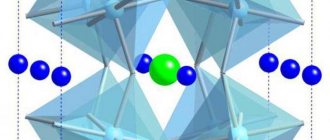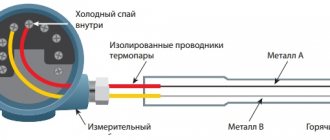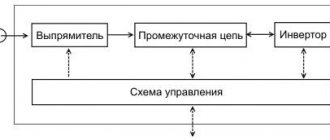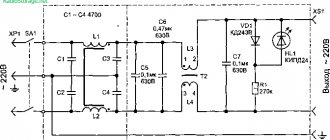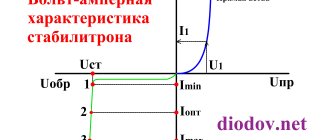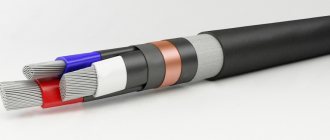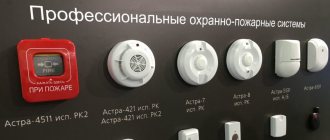Electrical materials science – Liquid dielectrics
Page 23 of 59
CHAPTER XI. LIQUID DIELECTRICS § 47. Classification and purpose of liquid dielectrics Electrical insulating mineral oils and synthetic liquid dielectrics are used as liquid electrical insulating materials in electrical devices: sovol and silicon - organic liquids. Mineral petroleum oils are most widely used. Based on the nature of their use as liquid dielectrics, petroleum oils can be divided into three groups: oils for power transformers and high-voltage switches; cable oils used for impregnation of paper insulation of high-voltage cables; capacitor oils used to impregnate paper insulation of capacitors. For the same purpose, oil-paper capacitors use an artificial liquid - sovol. A characteristic feature of all liquids is that their molecules have greater mobility compared to the molecules of a solid. The higher the temperature of liquids, the greater the mobility of their molecules. This property of liquids is determined by their viscosity. The greater mobility of liquid molecules provides them with the ability to fill various voids and solid insulation. Mineral oils well impregnate porous electrical insulating materials such as cardboard, paper, wood, etc. Being good dielectrics, mineral oils, penetrating into the pores of such insulation, improve their electrical characteristics. For example, for paper impregnated with mineral oil, the electrical strength Epr increases sharply compared to unimpregnated paper. Mineral oils at temperatures around 70-80 ° C have a low viscosity, so oil particles become more mobile. This allows the use of petroleum oils in transformers to cool the windings. The oil in transformers heats up near the windings and, flowing to the cold parts of the transformer tank, gives them the resulting heat. Oil with a high viscosity will not provide the necessary cooling of the transformer. In Fig. 103 shows the viscosity curve of petroleum transformer oil depending on temperature. In high-voltage transformers, petroleum oil is not only a heat-conducting medium, but also the main electrical insulating material. It fills the space between the windings of the transformer and thereby enhances the insulation of the transformer. In fulfilling this role, the oil must first of all have high electrical strength and a small dielectric loss tangent.
Rice. 103. Viscosity of transformer oil depending on temperature The same oil is used in high-voltage circuit breakers as in transformers. Here, the oil performs not only the function of a liquid dielectric that insulates parts of the switch from the walls of the tank, but also a medium that extinguishes the electric arc that occurs between the contacts of the switch when it disconnects high-voltage networks. The process of extinguishing an electric arc is as follows: at a high temperature of the electric arc, the oil decomposes, releasing gases (hydrogen, acetylene, ethylene, etc.). Gases displace oil from part of the volume near the switch contacts and form a space here. The pressure in this gas space increases, causing the arc to stop burning. In electrical cables, mineral oil is used in its pure form without any substances dissolved in it or as an impregnating composition for impregnating paper insulation. In the latter case, rosin is added to the mineral oil, which dissolves in the oil. As a result, the viscosity of the oil increases and it does not flow into the paper insulation inside the cable.
§ 48. Mineral electrical insulating oils
Mineral oils are obtained by fractional distillation of petroleum. Their chemical composition is determined by the composition of the oil. All petroleum oils are a mixture of various hydrocarbons of the paraffinic (methane), naphthenic and aromatic series. Paraffin hydrocarbons are compounds of carbon and hydrogen in the form of molecules with a chain structure: As can be seen from this formula, chains can be of different lengths depending on the number of carbon atoms connected to each other. Methane hydrocarbons have good chemical stability, i.e. resistance to oxidation. Naphthenic hydrocarbons are compounds of carbon and hydrogen in the form of closed rings with side chains. Therefore they are often called cyclic hydrocarbons. Their content in oil reaches 70-85%. Aromatic hydrocarbons are also cyclic compounds of carbon with hydrogen, having (similar to naphthenes) small side chains. It has been established that the removal of these hydrocarbons from electrical insulating oil leads to its rapid oxidation, however, an excessive amount of aromatic hydrocarbons in the oil composition lowers the flash point of oil vapor and causes precipitation. As a result, the electrical characteristics of the oil deteriorate. The amount of aromatic hydrocarbons in the oil is regulated depending on the chemical composition of the oil. A representative of aromatic compounds is benzene, the chemical formula of which is as follows: As can be seen from this formula, aromatic compounds, unlike naphthenes, have a so-called double bond between carbon atoms, which ensures their resistance to oxidation. Electrical insulating petroleum oils also contain other components - organic acids, resinous substances, sulfur compounds. The production of oils from petroleum is a complex technological process consisting of a number of physical and chemical operations. The individual parts contained in oil boil at different temperatures and therefore can be removed from it separately - by heating in a vacuum to different temperatures. At temperatures below 100° C, light products are released from oil: gasoline, naphtha, kerosene. From the remaining part, called fuel oil, diesel oil is released at temperatures above 300 ° C. By sequentially treating the oil with acid and alkali, chemically unstable compounds are removed from it and electrical insulating oil is obtained. The resulting oil is washed with warm distilled water, introduced into the oil in the form of thin streams. After settling and removing foreign products, the water-washed oil is dried and cleaned with bleaching clay* to remove chemically unstable substances. To do this, bleaching clays or earths are introduced into the oil. This oil is then filtered by passing it through layers of filter paper installed in a filter press apparatus. Transformer oil is available in two grades: transformer oil and transformer oil with an antioxidant additive. A substance is introduced into the composition of the second brand of oil - an antioxidant additive to stabilize the physico-chemical properties of the oil. All transformer oils are usually divided into the following groups:
- — fresh, unused oil received from the manufacturer;
- - clean dry oil. This group includes:
a) not yet in operation; b) oil that has already been in use, but has been chemically restored;
- - oil in use;
Table 27 Specifications for fresh transformer oil
* Some clays and earths are surfactants, the particles of which absorb various contaminants (water, resinous substances, etc.) from the oil.
- - oil withdrawn from circulation and subject to restoration (regeneration).
Fresh transformer oil is tested before being poured into devices and transformers. Its main characteristics are given in table. 27. As can be seen from the table, the electrical strength of fresh oil is not standardized. This characteristic is standardized by the “Technical Operation Rules” only for dry oil and oil in operation. The electrical strength values are standardized according to the operating voltages of oil-filled devices according to Table. 28. In addition, for operating oil the flash point should not be lower than 135 ° C, and the acid number should not be higher than 0.4 mg KOH/g. Table 28 Breakdown voltage of dry and operating oil *
| Operating voltage of the device, kV | ||||
| Oil name | up to 15 | up to 35 | up to 220 | up to 50:j |
| Operational, kV | 20 | 25 | 35 | 45 |
| Fresh or regenerated, kV | 25 | 30 | 40 | 50 |
*Punch a layer 2.5 mm thick using a standard punch (see Fig. 7G). A large number of electrical insulating petroleum oils are also used in the production of paper-insulated power cables. Depending on the design of the cables, oils are divided according to viscosity, tg value and pour point into the following three groups: 1 - low-viscosity oils MN-2; 2 - medium viscosity oils C-110 and C-220; 3— viscous oils P-28. Low-viscosity oil MH-2 is used in oil-filled cables of low and medium pressure (up to 3 atm). Low oil viscosity (about 9 cst at 50 ° C) for such cables is necessary to ensure that the cable is fed with oil through relatively small channels in it at all operating temperatures. Medium-viscosity oils S-110 and S-220 are intended for impregnation and filling of oil-filled high-voltage cables for voltages of 110 kV and higher at a pressure of about 14 atm. These oils do not contain either aromatic hydrocarbons or asphalt-resinous substances. They are a technically pure mixture of naphthenic and paraffin hydrocarbons, therefore they have very stable electrical characteristics, especially the tg b value. It has been established that the higher the viscosity of such oils, the lower the value of tg b. The most viscous oil is used for paper-insulated cables up to 35 kV, in which the impregnating liquid substance is P-28 oil with rosin dissolved in it. The viscosity of this oil-rosin impregnating mass should have a sharply decreasing curve depending on temperature. During the cable production process, when it is impregnated at temperatures of 115–130°C, a low viscosity of the mass is required. During operation at 65-80° C, on the contrary, high viscosity is required, which makes it difficult to move the impregnating mass in the cable if it is located vertically or obliquely. Along with high electrical strength, it is very important for all cable oils that the tg 6 value is small and does not increase sharply with increasing temperature. Oils in cables come into contact with metals - copper, lead, which are catalysts for their oxidation, therefore it is necessary that they have high chemical resistance to oxidation under operating conditions. In addition, gas bubbles, which weaken the electrical strength of the cable insulation, are not allowed in high-voltage oil-filled cables. At high electric field strengths in cables, naphthenic and paraffin hydrocarbons can decompose and release hydrogen, i.e., form gas bubbles. In cables with viscous impregnation (P-28), such gas emissions are absorbed by rosin. In oil-filled cables with high pressure, the ionization process, which results in the release of hydrogen, is absent or significantly weakened by pressure. Therefore, gas evolution is an important indicator only for low-pressure oil-filled cables. Table 29 Physical and electrical characteristics of electrical insulating oils *
For high-viscosity oil P-28 data; are not given, since it is used in cables and as an oil-rosin mass. For comparison with the viscosity of other oils, it should be noted that its viscosity at 100°C is the highest and is equal to 26-30 cst. In table 29 shows the main characteristics of two cable oils. Petroleum oil used in paper-oil capacitors serves as an electrical insulating material that provides high electric field strengths. Therefore, electrical characteristics are very important for capacitor oil, namely: low tg 6, high dielectric strength, high volumetric resistivity. The dielectric constant e of liquid dielectrics for a capacitor is desirable to be higher, but this cannot be achieved in petroleum oils, since these oils are non-polar dielectrics. Capacitor oil is obtained through more thorough refining than transformer oil. Cleaning consists of a series of sequential chemical treatments of the oil using acids, alkalis, hot water washing and cleaning with bleaching clays.
§ 49. The influence of impurities and physicochemical factors on the properties of electrical insulating oils
Rice. 105. Dependence of the electrical strength of transformer oil on the water content in it (at different temperatures). The properties of oils change depending on the impurities that can get into them under operating conditions, as well as on temperature and other factors. Rice. 104. Dependence of the electrical strength of transformer oil on the water content in it (at 25 ° C) It should be noted that the electrical strength of oil Epr is reduced by the content of water and various solid impurities in it. Water that gets into the oil can dissolve in large quantities (molecular water). As the temperature drops, this dissolved water precipitates, creating tiny droplets (emulsion water) distributed throughout the oil. Molecular water has little effect on the electrical strength value. Emulsion water greatly reduces the breakdown strength EPr, as illustrated in Fig. 104. If such a dependence is determined for the same moistened oil at different temperatures, then the values of Eap at a higher temperature will be higher. This is explained by the fact that at high temperatures, part of the water from emulsion has passed into molecular water. This dependence is shown in Fig. 105. Fig. 106. Dependence of the breakdown voltage of transformer oil on the distance between electrodes of various shapes. Increasing the temperature of dry oil reduces its electrical strength. The electrical strength of the oil and its breakdown voltage Unp are greatly influenced by the shape of the electrodes and the distance between them. In Fig. Figure 10(5) shows the dependence of the breakdown voltage of transformer oil on the distance between electrodes in the form of balls and rounded plates (curve /) and plates with sharp edges (curve 2). The figure shows that in the latter case, the values of C/pr with increasing distance between the electrodes significantly less than in the first case.This is explained by the inhomogeneity of the electric field generated by electrodes with sharp edges.
Rice. 107. Dependence of the dielectric loss tangent of two different oils on temperature: 1 - Baku fresh (refined) oil, 2 - Emben fresh purified oil; 3 - Baku oil, used, 4 - Emben oil, used The duration of exposure to voltage also affects the electrical strength. At pulse voltages, the electrical strength of the oil is higher than at alternating or direct voltage. As external pressure increases, the strength of the oil also increases. The value of the dielectric loss tangent tan 6 for oils is determined by their electrical conductivity. With increasing temperature, electrical conductivity increases and tan b increases similarly. This is clearly visible in Fig. 107, which shows the curves of tan 6 versus temperature for two different oils. The curves show that an increase in tg b of oils in the case of their oxidation occurs as a result of an increase in the conductivity of the oils (graphs 3 and 4 in Fig. 107). All electrical insulating oils must have highly stable characteristics, which may change as the oil ages. Oil aging is mainly expressed in its oxidation by atmospheric oxygen. High temperatures under operating conditions accelerate this oxidation. Oil aging is also accelerated by metal catalysts: copper, brass, iron and other metals. The presence of water in oil accelerates its aging process. When oil ages, solid, tar-like impurities are formed that are insoluble and soluble in hot oil. Such impurities fall out as sediment on the windings and other parts of the transformer, which makes it difficult to remove heat from heated parts. Being dissolved in oil, impurities significantly worsen its electrical properties. As the oil ages, acids form in it, which can cause the destruction of winding insulation. To slow down the aging of oils, substances that delay oxidation - inhibitors * are introduced into them. However, the addition of inhibitors cannot completely protect the oil from oxidation and aging. Therefore, electrical insulating oils should be stored and transported in dry, clean containers, and pumped through clean metal pipelines (but not through rubber hoses, which, when dissolved, contaminate the oil). Under operating conditions, the oil must be protected from the penetration of air and moisture into it. The lids of oil-filled devices must close tightly and have conservators, i.e., additional tanks. Sometimes in transformers the space above the oil level is filled with an inert gas, such as nitrogen, which does not chemically affect the oil and protects the oil from oxidation.
- Back
- Forward
Main types of liquid dielectrics
⇐ PreviousPage 25 of 28Next ⇒
Petroleum oils (capacitor, transformer, cable) and synthetic liquids (chlorinated hydrocarbons, silicon and organofluorine liquids, esters of various types) are used as liquid electrical insulating materials in electrical devices.
Petroleum electrical insulating oils. The bulk of these oils are hydrocarbon components. In addition, they contain other components (in amounts up to 1%) containing atoms of sulfur, oxygen or nitrogen. Petroleum electrical insulating oils are obtained by thoroughly purifying residual oil fractions. These oils have a number of positive properties, which have made them very widely used:
a) sufficiently high electrical strength;
b) low dielectric loss tangent with good oil purification;
c) cheap.
Condenser oil. The main parameters of this oil are given in table. 15.1.
It is used for impregnation of insulation in paper and film capacitors. When a paper dielectric is impregnated, its dielectric constant and electrical strength increase and the magnitude of dielectric losses decreases, which makes it possible to reduce the dimensions, weight and cost of the capacitor at a given operating voltage, frequency and capacitance.
Transformer and cable oils have lower electrical properties compared to capacitor oils and are used in powerful electrical devices.
The disadvantages of petroleum oils include: a) fire and explosion hazard; b) limited operating temperature range; c) tendency to electrical aging.
Synthetic liquid dielectrics have some properties that are superior to petroleum-based electrical insulating oils. Let's look at the most important of them.
Chlorinated hydrocarbons are obtained from various hydrocarbons (biphenyl, benzene) by replacing part of the hydrogen atoms in their molecules with chlorine atoms. The most famous representatives of this group are Sovol and Sovtol-10. The atoms in the molecules of these materials are arranged asymmetrically, therefore Sovol and Sovtol-10 are polar dielectrics (Table 15.1).
Sovol is used instead of capacitor oil for impregnating and filling paper insulation with capacitors, which makes it possible to reduce their volume at equal reactive power by about a factor. Sovol is a non-flammable substance. Disadvantages: high pour point (+5° C) and significant viscosity in the operating temperature range, which do not allow using Sovol in its pure form for filling transformers.
Organosilicon liquids have low dielectric losses, low hygroscopicity, increased heat resistance (short-term up to 250°C), and low pour point (from -60 to -140°C). They are used to impregnate the insulation of capacitors intended for operation in the high-frequency region at elevated temperatures, as well as for filling electrical appliances. Organofluorine liquids can be considered as derivatives of hydrocarbons, in the molecules of which hydrogen atoms are partially or completely replaced by fluorine atoms. Organofluorine liquids are used for impregnation and pouring into capacitors and transformers, and for testing radio electronics elements at low and high temperatures. The disadvantages of these liquids include their high cost.
Gaseous dielectrics
Air is most widely used as an electrical insulating material. It also penetrates into all pores of solid materials and saturates liquids.
Air is basically a mixture of nitrogen and oxygen mixed with other gases. The typical composition of dry air (in percent by volume) is as follows: nitrogen (N2) - 78.08%; oxygen (O2) - 20.95%; carbon dioxide (CO2) - 0.03%; hydrogen and inert gases (Ar, He, Ne, Kr, Xe) - 0.94%. The electrical properties of air are given in table. 15.2.
From the point of view of dielectric losses, air can be considered an ideal dielectric. However, the disadvantage of air as a dielectric is its low electrical strength.
Gaseous substances have low density due to the large distances between molecules. In view of this, the polarization of all gases is insignificant, and the dielectric constant of all gases, including air, is close to unity (1.000072-1.00138).
Dielectric losses in gases are caused mainly by electrical conductivity, since the orientation of dipole molecules of gases during their polarization is not accompanied by dielectric losses. All gases are distinguished by very low electrical conductivity, and their dielectric loss tangent is negligibly small tgδ≈4·10-6.
A feature of gas breakdown in a non-uniform field is the occurrence of a partial discharge in the form of a corona, accompanied by glow and destruction of gas molecules. With a further increase in voltage, the corona develops into a brush discharge, which then turns into a spark discharge. In the case of high discharge power, an arc (arc discharge) is formed with the formation of plasma. The arc discharge is accompanied, in addition, by chemical processes of the formation of ozone and nitrogen oxides.
The use of gases as electrical insulation. In this case, the following requirements are imposed on the gases: they must be chemically inert and, upon ionization, not form particularly active substances that can destroy solid materials or cause corrosion of the material. In high-voltage devices, gases are often used at elevated pressure to increase dielectric strength. Nitrogen is more widely used in sealed devices, which has almost the same electrical strength as air, but it is less active than air containing oxygen.
Gases with high molecular weight and density, primarily SF6 gas (sulfur hexafluoride SF6), are widely used in sealed electrical installations. The electrical strength of SF6 gas is approximately 2.5 times higher than that of air. It is used in standard capacitors designed for voltages up to 500 kV, in gas-filled cables, in high-voltage switches designed for an operating voltage of 750 kV, where it acts as an arc-extinguishing material, and its use in transformers for electronic devices makes it possible to reduce the size and weight of the latter. One of the disadvantages of SF6 gas is its relatively high cost. In order to reduce the cost of gas insulation, SF6 gas is often used in a mixture with cheaper nitrogen.
Inert gases are mainly used in gas-discharge devices and lighting lamps: helium, neon, argon, krypton, xenon. Argon is most widely used because it has a combination of favorable properties: a relatively low ionization potential, chemical inertness, low thermal conductivity, and a simpler production and purification technology than other inert gases.
⇐ Previous25Next ⇒
Recommended pages:
